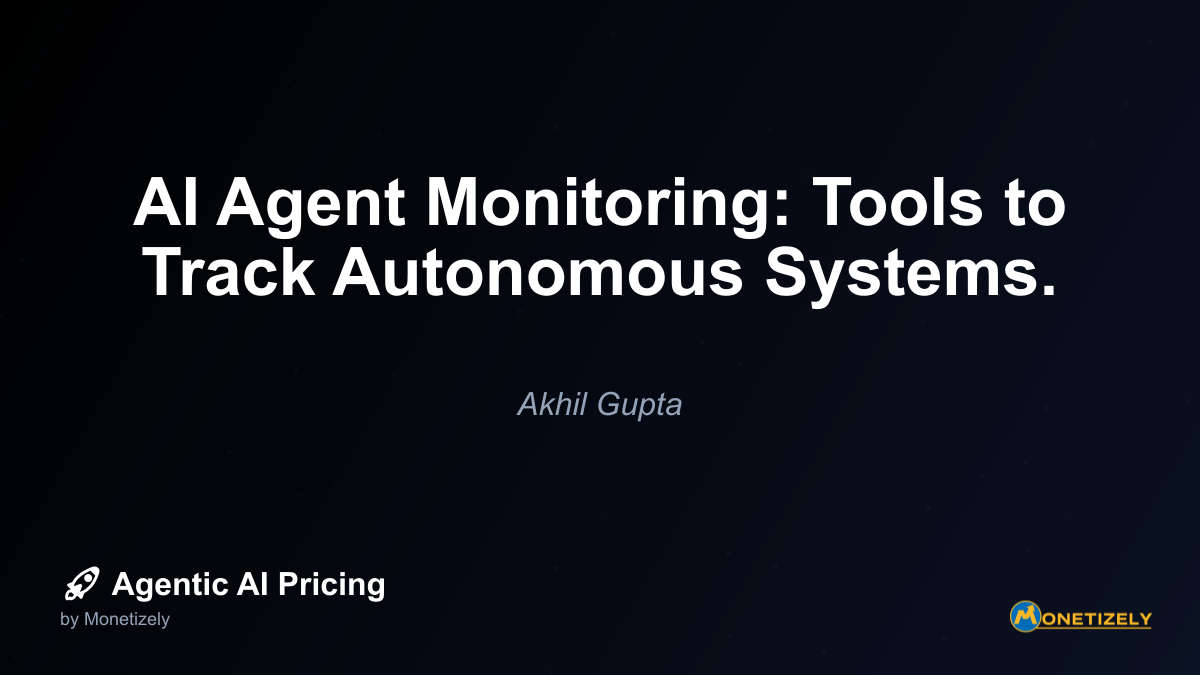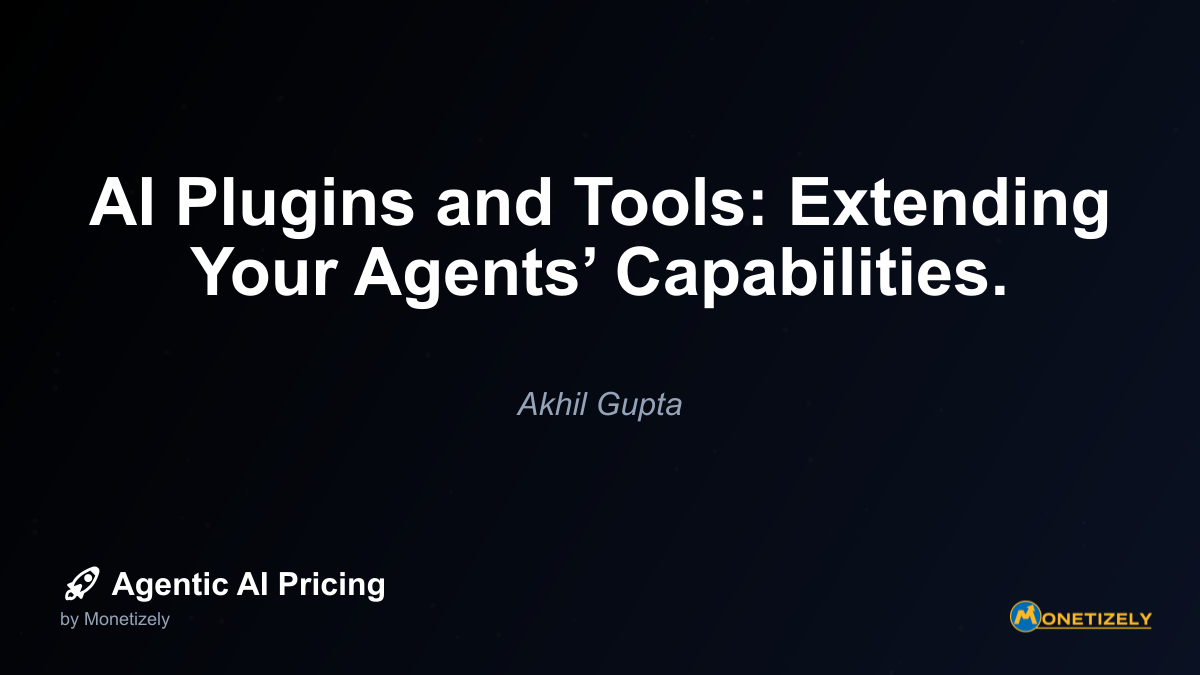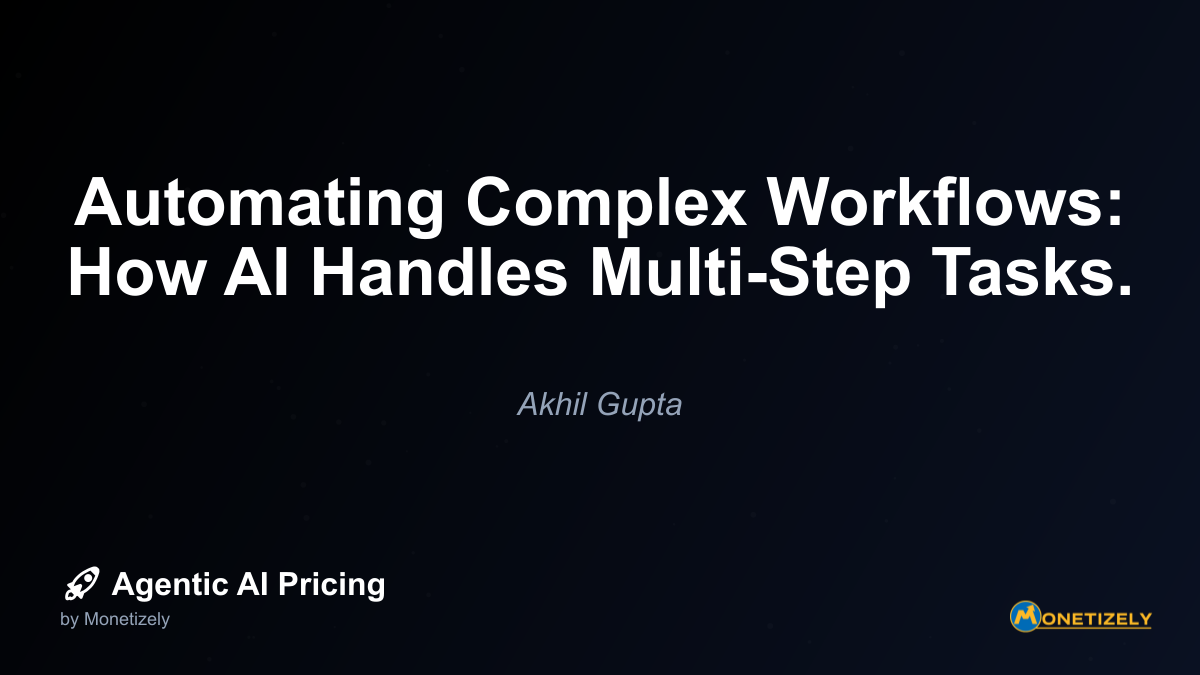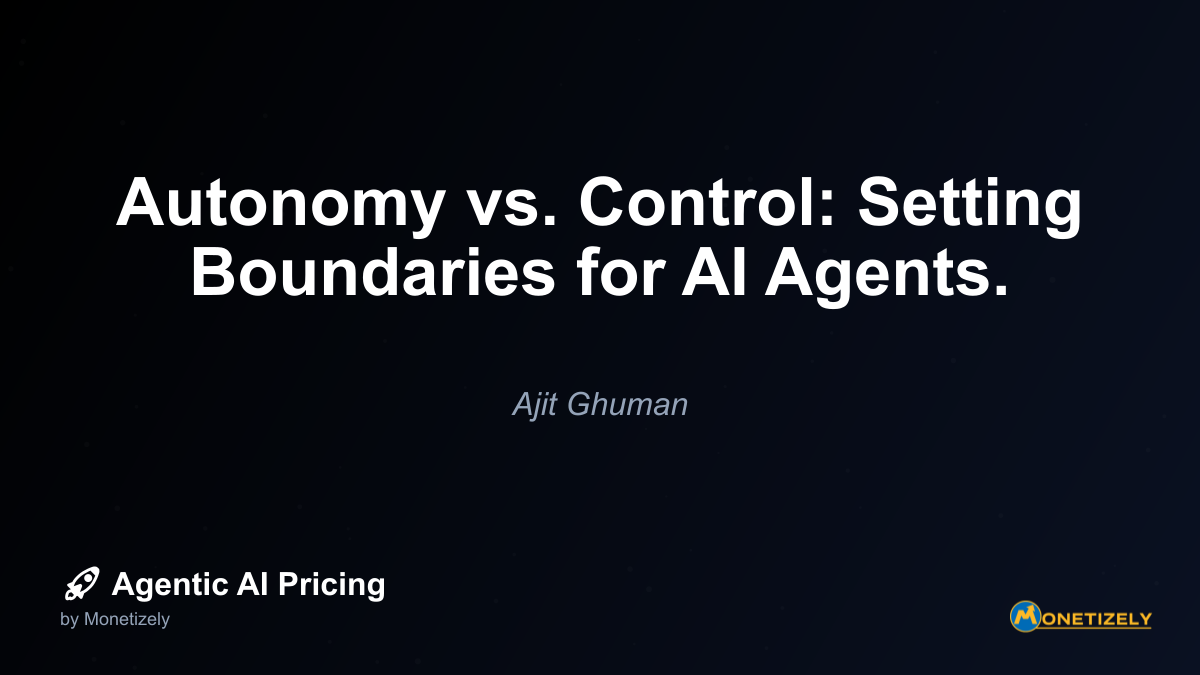· Akhil Gupta · Technical Insights · 10 min read
Integrating AI with Your Data: Connecting to CRMs and Data Lakes.
AI and SaaS Pricing Masterclass
Learn the art of strategic pricing directly from industry experts. Our comprehensive course provides frameworks and methodologies for optimizing your pricing strategy in the evolving AI landscape. Earn a professional certification that can be imported directly to your LinkedIn profile.
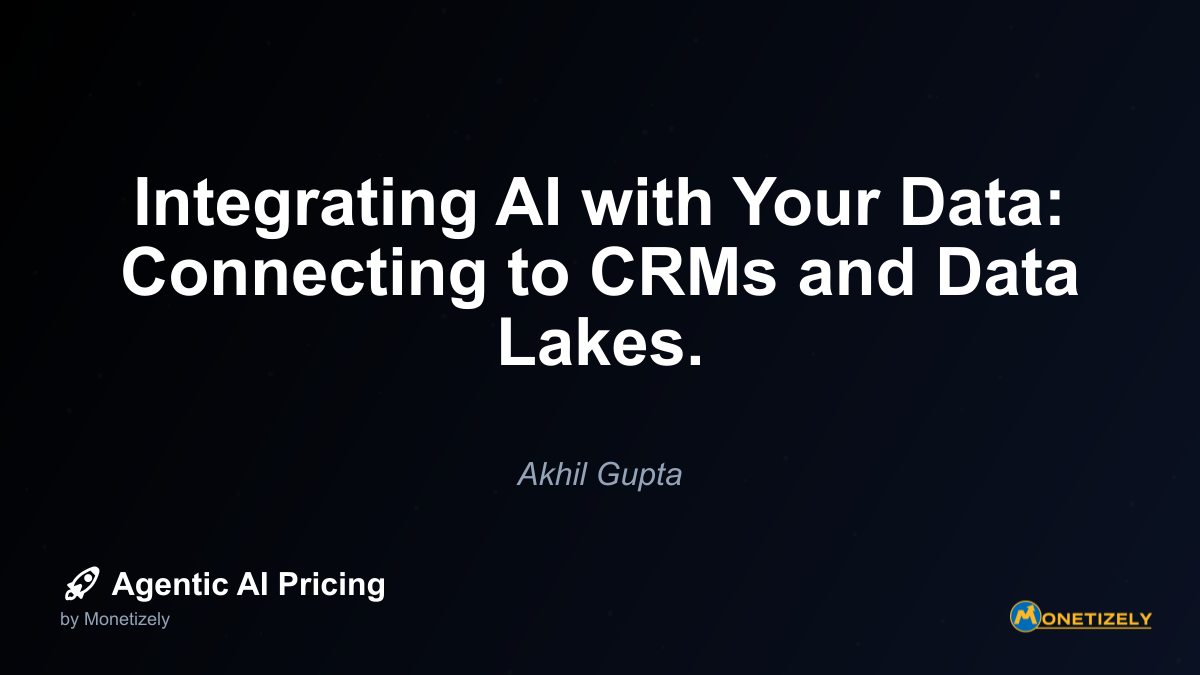
When selecting connectors, organizations should consider:
- Data volume and velocity: Can the connector handle the required throughput?
- Security requirements: Does the connector maintain appropriate security controls?
- Transformation capabilities: Can it handle necessary data transformations?
- Bidirectional capabilities: Does it support both reading and writing data?
- Scalability: Will it accommodate growing data needs?
For example, a financial services company implementing AI for customer service might require connectors that can simultaneously access customer profiles from Salesforce, transaction histories from a data warehouse, and compliance information from a specialized database—all while maintaining strict security protocols.
2. Middleware and Integration Platforms
While connectors provide the physical links between systems, middleware offers the intelligence layer that orchestrates data flows. Modern integration platforms provide several critical functions:
- Data transformation: Converting between formats (JSON, XML, CSV, etc.)
- Protocol translation: Bridging different communication standards
- Security enforcement: Implementing authentication and authorization
- Monitoring and logging: Tracking data movements and access patterns
- Error handling: Managing failures and exceptions
Leading middleware solutions include:
- Enterprise service buses (ESBs)
- Integration Platform as a Service (iPaaS) solutions
- API management platforms
- Extract, Transform, Load (ETL) tools
- Event streaming platforms like Apache Kafka
The choice of middleware depends on an organization’s existing technology stack, integration requirements, and AI implementation approach. Cloud-native organizations might leverage iPaaS solutions like Boomi or Informatica, while enterprises with complex on-premises systems might require more robust ESB architectures.
3. Data Cleaning and Preparation
Even with perfect connectivity, AI systems struggle with poor-quality data. Data preparation is often the most time-consuming aspect of AI integration, involving:
- Data cleaning: Removing duplicates, correcting errors, and standardizing formats
- Normalization: Scaling data to appropriate ranges for AI processing
- Feature engineering: Creating derived attributes that enhance AI performance
- Enrichment: Augmenting data with additional context or information
- Validation: Ensuring data meets quality thresholds before use
Organizations increasingly employ specialized data preparation tools like Trifacta, Alteryx, or Databricks to streamline these processes. These platforms offer visual interfaces for defining data transformations and quality rules, often incorporating their own AI capabilities to suggest optimal preparation approaches.
A healthcare provider integrating AI with patient records might need extensive data cleaning to standardize diagnostic codes, normalize lab results across different measurement systems, and anonymize personally identifiable information before making the data available to AI systems.
Real-Time Data Pipelines: The Nervous System for AI
While batch processing remains common for certain AI workloads, the trend toward real-time AI applications demands continuous data pipelines. These pipelines enable AI systems to respond to events as they happen, rather than processing data in scheduled batches.
Components of Real-Time AI Data Pipelines
Effective real-time pipelines for AI typically include:
- Event detection: Identifying relevant changes or activities in source systems
- Stream processing: Continuously transforming and enriching data streams
- In-memory processing: Maintaining working datasets for immediate access
- Low-latency delivery: Minimizing delays between data creation and AI consumption
- Stateful processing: Maintaining context across events and transactions
Technologies enabling real-time AI data pipelines include:
- Apache Kafka: For high-throughput message streaming
- Apache Flink: For stateful stream processing
- Redis: For in-memory data storage and caching
- ksqlDB: For real-time analytics on streaming data
- Confluent Cloud: For managed Kafka implementations
Real-time pipelines are particularly valuable for AI applications in domains like fraud detection, personalized customer experiences, and operational optimization. For instance, an e-commerce platform might implement a real-time pipeline connecting its transaction system to an AI fraud detection model, enabling suspicious activities to be flagged before transactions complete.
Bidirectional Data Flows: Enabling AI to Update Systems
True integration goes beyond simply feeding data to AI systems—it also enables AI to write results back to enterprise systems. This bidirectional flow creates a complete feedback loop where AI can:
- Update customer records with new insights
- Create tickets or tasks in workflow systems
- Modify inventory or pricing in ERP systems
- Trigger notifications or alerts
- Document its actions and reasoning
Implementing bidirectional flows requires careful consideration of:
- Write permissions: Determining what systems the AI can modify
- Validation rules: Ensuring AI-generated updates meet quality standards
- Audit trails: Tracking all AI-initiated changes
- Fallback mechanisms: Handling scenarios where updates fail
- Human oversight: Enabling review of AI-generated changes when appropriate
For example, a marketing automation system might allow an AI to update customer segments in a CRM based on behavioral analysis, but require human approval before modifying high-value account information.
Data Governance and Security Considerations
The integration of AI with enterprise data introduces significant governance and security challenges. Organizations must establish comprehensive frameworks addressing:
Data Governance for AI Integration
- Data lineage tracking: Documenting the origins and transformations of all AI-consumed data
- Metadata management: Maintaining context about data meaning and relationships
- Quality monitoring: Continuously assessing data against quality standards
- Usage policies: Defining appropriate use cases for different data types
- Compliance documentation: Maintaining records of regulatory adherence
Security Requirements
- Authentication and authorization: Controlling who and what can access data
- Encryption: Protecting data both in transit and at rest
- Privacy controls: Implementing mechanisms for data anonymization and minimization
- Access monitoring: Tracking all data access and usage
- Vulnerability management: Regularly assessing and addressing security weaknesses
Organizations often implement specialized tools like Collibra, Alation, or Informatica for data governance, while security might leverage solutions from vendors like Imperva, Privacera, or Okera.
The financial services sector provides instructive examples of governance and security in AI data integration. Banks typically implement multiple security layers for AI systems accessing customer financial data, including tokenization of sensitive information, field-level encryption, and comprehensive audit logging—all while maintaining compliance with regulations like GDPR, CCPA, and industry-specific requirements.
Architectural Patterns for AI-Data Integration
Several architectural patterns have emerged as effective approaches for integrating AI with enterprise data:
1. Data Mesh Architecture
The data mesh approach decentralizes data ownership, treating data as a product managed by domain experts rather than centralized IT teams. This pattern:
- Empowers domain teams to maintain their own data pipelines
- Establishes federated governance standards
- Creates self-serve data infrastructure
- Emphasizes domain-specific data quality
- Enables more agile AI implementation
2. Data Fabric Architecture
Data fabric architectures create a unified infrastructure layer that spans diverse data sources, providing consistent capabilities regardless of where data resides. This approach:
- Abstracts away the complexity of underlying data systems
- Provides consistent security and governance
- Enables metadata-driven integration
- Reduces point-to-point integration complexity
- Accelerates AI implementation through standardized data access
3. Hybrid Lake/Warehouse Architecture
Many organizations implement a hybrid approach combining data lakes (for raw, diverse data) with data warehouses (for structured, transformed data). This pattern:
- Maintains raw data for exploratory AI workloads
- Provides optimized, structured data for production AI
- Enables both batch and real-time processing
- Balances flexibility with performance
- Accommodates diverse AI use cases
4. Event-Driven Architecture
Event-driven architectures organize systems around the production, detection, and consumption of events. For AI integration, this approach:
- Enables real-time AI responses to business events
- Decouples data producers from AI consumers
- Facilitates scalable, asynchronous processing
- Supports complex event processing for AI
- Enables event sourcing for complete audit trails
Organizations typically select architectural patterns based on their existing technology investments, AI maturity, and specific use cases. Many implement hybrid architectures combining elements from multiple patterns as they evolve their AI capabilities.
Implementation Challenges and Best Practices
Integrating AI with enterprise data sources inevitably presents challenges. Common obstacles and their solutions include:
Challenge 1: Data Silos and Fragmentation
Problem: Enterprise data often resides in disconnected systems with inconsistent formats and access methods.
Best Practices:
- Implement a data catalog to create visibility across silos
- Establish common data models for critical domains
- Deploy virtualization technologies to create unified views
- Prioritize integration based on business value
- Consider data replication for high-priority AI workloads
Challenge 2: Data Quality Issues
Problem: Poor data quality undermines AI performance and trustworthiness.
Best Practices:
- Implement automated data quality monitoring
- Establish data quality SLAs with source system owners
- Deploy data observability tools to detect anomalies
- Create feedback loops from AI systems to data stewards
- Document quality requirements for each AI use case
Challenge 3: Performance and Scalability
Problem: AI systems may require data volumes or velocities that strain existing infrastructure.
Best Practices:
- Implement caching strategies for frequently accessed data
- Consider purpose-built databases for specific AI workloads
- Leverage cloud elasticity for variable workloads
- Implement data partitioning and indexing strategies
- Monitor and optimize query performance continuously
Challenge 4: Security and Compliance
Problem: AI data integration introduces new security vulnerabilities and compliance challenges.
Best Practices:
- Implement least-privilege access principles
- Consider data tokenization for sensitive information
- Establish clear data residency policies
- Maintain comprehensive audit trails
- Conduct regular security assessments
Challenge 5: Skills and Organizational Alignment
Problem: Effective AI-data integration requires specialized skills and cross-functional collaboration.
Best Practices:
- Create cross-functional teams spanning data and AI disciplines
- Invest in upskilling programs for existing staff
- Consider DataOps and MLOps practices to improve collaboration
- Establish clear ownership for integrated data products
- Create centers of excellence to share best practices
Case Study: Building a Customer 360 AI Integration
To illustrate these concepts, consider how a B2B software company might integrate AI with enterprise data to create a comprehensive customer intelligence platform:
The Challenge
The company needed to provide its sales and customer success teams with AI-powered insights about customer health, upsell opportunities, and churn risk. This required integrating data from:
- Salesforce CRM (customer relationships and opportunities)
- Gainsight (customer success metrics)
- Zendesk (support tickets and interactions)
- Product usage data (from a data lake)
- Financial systems (billing and subscription data)
The Solution Architecture
The company implemented a multi-layered integration approach:
- Foundation Layer: A data lake built on Snowflake to consolidate raw data from all sources
- Integration Layer: Fivetran for structured data sources and Airbyte for custom sources
- Transformation Layer: dbt for data modeling and preparation
- Semantic Layer: A business glossary and data catalog in Alation
- AI Layer: Custom models deployed in Python with direct Snowflake connectivity
- Delivery Layer: Results pushed back to Salesforce via API and to a custom dashboard
Key Implementation Decisions
- Real-time vs. Batch: Implemented near-real-time integration for critical systems (Salesforce, Zendesk) and daily batch for others
- Data Quality: Deployed Great Expectations to validate data against defined schemas and business rules
- Security: Implemented column-level security in Snowflake and row-level security based on customer account ownership
- Governance: Created a data council with representatives from sales, customer success, and product teams
Results
The integrated AI system delivered significant business impact:
- 22% reduction in customer churn through earlier intervention
- 18% increase in upsell revenue from AI-identified opportunities
- 35% improvement in customer success team efficiency
- 40% reduction in time to onboard new data sources
This case demonstrates how thoughtful integration of AI with enterprise data sources can deliver tangible business outcomes when technical implementation aligns with clear business objectives.
Future Trends in AI-Data Integration
The landscape of AI-data integration continues to evolve rapidly. Key emerging trends include:
1. Autonomous Data Integration
AI itself is increasingly applied to the integration challenge, with systems that can:
- Automatically discover and catalog data sources
- Suggest optimal integration patterns
- Self-heal broken data pipelines
- Continuously optimize data flows
- Learn from integration patterns across organizations
2. Federated Learning and Edge AI
Rather than centralizing all data, organizations are exploring approaches that bring AI to the data:
- Federated learning models that train across distributed data sources
- Edge AI implementations that process data where it’s created
- Hybrid architectures combining edge and cloud processing
- Privacy-preserving analytics that minimize data movement
- Decentralized governance frameworks for distributed AI
3. Knowledge Graphs for Context
Organizations are increasingly leveraging knowledge graphs to provide contextual understanding:
- Semantic layers that capture relationships between data entities
- Ontologies defining business concepts and their relationships
- Graph databases enabling relationship-based queries
- Inference engines that can derive new insights from existing data
- Natural language interfaces for data exploration
4. Data Contracts and Exchanges
Formalized agreements between data producers and consumers are emerging:
- Data contracts specifying quality, format, and delivery requirements
- Internal data marketplaces facilitating discovery and access
- Standardized data products with defined SLAs
- Self-service data acquisition for AI teams
- Pricing and chargeback models for internal data usage
Conclusion
Integrating AI with enterprise data sources represents both a significant challenge and an essential capability for organizations seeking to maximize the value of their AI investments. The journey from siloed, inaccessible data to a seamless, intelligent fabric connecting AI and enterprise systems requires thoughtful architecture, appropriate technologies, and organizational alignment.
Organizations that excel at this integration create a virtuous cycle: better data access leads to more effective AI, which generates more valuable insights, driving increased investment in data integration capabilities. This positive feedback loop becomes a sustainable competitive advantage in an increasingly AI-driven business landscape.
As you embark on your own AI-data integration initiatives, consider starting with these fundamental steps:
- Assess your current state: Map existing data sources, quality levels, and integration capabilities
- Define clear business outcomes: Identify specific AI use cases with measurable value
- Start small but think big: Begin with focused integration projects while developing a comprehensive strategy
- Invest in foundational capabilities: Build reusable integration patterns and governance frameworks
- Cultivate cross-functional collaboration: Bridge the gap between data, AI, and business teams
By thoughtfully addressing the technical, organizational, and governance aspects of AI-data integration, your organization can transform raw data into actionable intelligence, driving better decisions and creating new opportunities for innovation and growth.
Co-Founder & COO
Akhil is an Engineering leader with over 16+ years of experience in building, managing and scaling web-scale, high throughput enterprise applications and teams. He has worked with and led technology teams at FabAlley, BuildSupply and Healthians. He is a graduate from Delhi College of Engineering and UC Berkeley certified CTO.
Pricing Strategy Audit
Let our experts analyze your current pricing strategy and identify opportunities for improvement. Our data-driven assessment will help you unlock untapped revenue potential and optimize your AI pricing approach.

